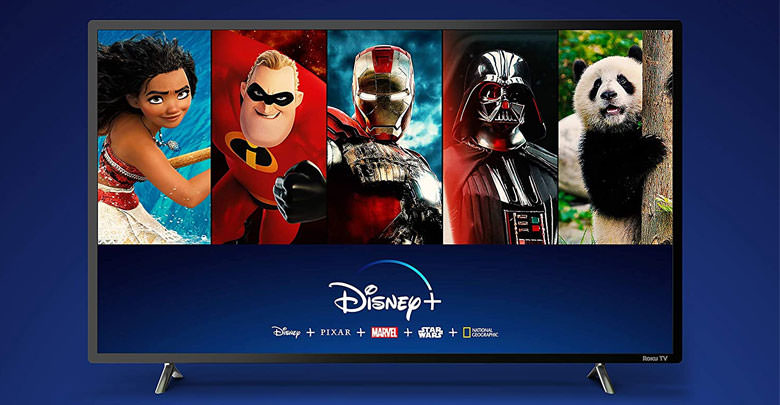Streaming Media Player: The Best to Buy

Anyone who does not know which streaming media player to buy could draw valuable information from the following guide.
Table of Contents
How to choose the best Streaming Media Players
To purchase a streaming media player that is right for you, you must consider several factors to avoid a purchase that proves to be below your expectations.
The TV you own plays a fundamental role in the choice since it will interface with the latter. The quality of the video content evolves continuously. Until a few years ago, it was unthinkable to conceive videos in 8K. We are slowly moving towards the standard one with the more widespread diffusion of 4K TV, or with the definition that we would define Ultra HD, equal to 3,840 x 2,160 pixels.
4K TV still costs more than the average, but full HD panels are now widespread in all homes. Before choosing your streaming media player, try to understand the maximum resolution that can be managed by the TV to which you will connect it. In this way, you will purchase a product capable of displaying the correct content for the panel.
The best-selling streaming media players, especially the cheap ones, can hardly manage 4K well, so consider your budget. If you plan to upgrade shortly by purchasing an Ultra HD TV, you may also decide to invest in a suitable streaming media player.
Not just videos
If video quality is important, it is not the only decisive factor in choosing the product. The time has come to delve a bit into the technical characteristics of these devices, thus analyzing the processor, RAM, and space available.
The processor is the real brain of the product and works closely with RAM. Therefore, it is not necessary to memorize all the various types of processors on the market. Still, the abbreviation Quad Core is fundamental, which identifies the most recent and best-performing ones.
For RAM, the concept of ” more is better ” applies. A device with little memory of this type will struggle to navigate the menus and view movies smoothly and without jerks and interruptions. Although the union minimum would be 2 GB, according to the products, it can also go down to 1 GB while maintaining the same functionality thanks to a more powerful processor.
Storage space is a detail not to be taken lightly, especially if you are fond of archives and like to have everything at hand on your streaming media player. This space can range from a minimum of 4 GB to over 16 GB. There must be the possibility of connecting USB or microSD devices to expand this quantity and the internal storage space.
Always look for this compatibility in the product data-sheet in order not to find yourself with a streaming media player with excessively reduced space without the possibility of appeal.
Accessories
The USB ports also have another fundamental purpose; they allow you to connect external accessories to the streaming media player, making it easier to use the product. Let’s talk about keyboards, mouse, and gamepads.
A keyboard, perhaps with a built-in trackpad that can act as a mouse, makes browsing on the browser and entering credentials to access social networks, for example, much more intuitive. On the other hand, the gamepads offer the possibility to play with the titles of the moment without taking advantage of the uncomfortable remote control, making the streaming media player an interesting game station for your children too.
Applications
From those for IPTV to the most popular streaming on-demand services, the applications are the backbone of the streaming media players. So do not underestimate the compatibility with the most important ones and always try to understand which ones can work on the chosen product and which cannot perform.
It is usually complicated to find a streaming media player that manages all of them flawlessly unless you focus on costly devices. The most supported are YouTube and Netflix.
Frequent questions
What is the Streaming Media Player for?
The streaming media player is a device that can hook up to the home network, be it Wi-Fi or Ethernet, and guarantee internet access as if it were a smartphone or tablet while viewing the contents on your home TV via a simple HDMI connection.
Through a streaming media player, you can start all the most famous streaming video applications such as Netflix, YouTube, Amazon Prime Video, and so on and browse the Internet through a browser or even play games on the Google Play Store.
How does Streaming Media Player work?
The operation of a streaming media player is straightforward and requires no computer knowledge of any kind. All you have to do is connect the product to your TV via HDMI cable, usually included in the package or easily purchased in any electronics store, be it physical or online, and hook it up to the home Internet.
For this step, you can opt both for the wireless connection, if the modem/router is too far away, and the wired Ethernet one, which is much more reliable and faster.
Via the wired network, you will not need to enter credentials. The connection will come directly without a password, while for Wi-Fi, you will need to have the key set at hand. If you have never changed it, you can find it on the sticker below your modem.
Once you have performed the procedure, you will be ready to access the Play Store menu and download the applications you need, using the TV screen to view videos and games.
How much does a streaming media player cost?
The price of a streaming media player can range from a few tens of euros to over a hundred, depending on the hardware characteristics. However, this is a contained expense compared to the purchase of a smart TV that allows you to connect to the Internet, the cost of which is more than several hundred euros.
These devices are beneficial for those who already have a new-generation TV but without smart features. Replacing it would be unnecessary and expensive, especially since it is possible to use a low-cost streaming media player.
Which Internet speed is recommended?
To view streaming content in HD Ready quality, i.e., 1,280 x 720 pixels, a latest-generation ADSL connection is enough to have a satisfying experience, both from the point of view of the image quality and the fluidity of the same, it would be preferable to have a fiber connection at least 30 MB.
How to use a Streaming Media Player
To make the best use of your streaming media player, you need a TV and a home Internet connection. These are the two basic requirements to keep in mind when you buy the product. As for the TV must have a panel compatible with the video output of the files, whether they are in physical format in the memory of the streaming media player.
The standard quality is now Full HD, 1,920 x 1,080 pixels, but if you want to see videos in 4K, you will need a TV and a streaming media player that supports this technology. The first step is to connect the device to the TV using the HDMI cable included in the package.
Identify one free slot on the TV and the only one available on the streaming media player and connect. Now turn on the TV, and with the appropriate remote controls, select the dedicated video source, which could be HDMI 1, HDMI 2, or later depending on the slot in which you inserted the cable.
With the streaming media player remote control at your fingertips, turn on the device and follow the on-screen instructions to connect the home Internet via Wi-Fi. If you don’t know the password to log in, you can usually find it under the modem/router.
Remember, though, that if you have previously changed the password, it will not work, and you will have to perform a reset unless you remember the new key inserted. It is also possible to connect the streaming media player to the Internet via LAN cable to remedy the problem.
This setup requires that the device and modem are close enough unless you have a particularly long cable, especially if the devices are in two different rooms. For this connection, insert one end of the cable into the modem and the other into the streaming media player, immediately establishing the connection.
Download applications
If among the pre-installed applications, the ones you usually use on your smartphone or tablet are missing, you can access the Play Store to download the missing ones. Look for the Play Store icon in the menu and access it by entering your Google credentials.
By doing so, you will have access to the entire Android App catalog, and you can start downloading programs such as Netflix, Amazon Prime Video, Tim Vision, Infinity, and so on. However, remember that you will need to sign up for a subscription with the respective distributors to use these video streaming services.
Use external devices
If you intend to make Internet browsing easier and more intuitive, and you are tired of the slowness of the remote control, you can connect keyboards compatible with your streaming media player. After obtaining these products, use the USB dongle included in the respective packaging and insert it in the appropriate slot that you usually find on the back of the streaming media player.
These devices are generally Plug and Play, which means that you need to connect them to make them start working without an additional installation. To expand the storage space, you can use external hard drives or, better, micro SD. Again, all you have to do is insert them into the appropriate slots to start using the files on these devices.
Product prices and availability are subject to change. Any price and availablility information displayed on Amazon at the time of purchase will apply to the purchase of any products.






